Set amid one of the most inspiring mountain landscapes on earth, Mark Nicholls suggests ten reasons to visit the Dolomites as an all-year-round destination
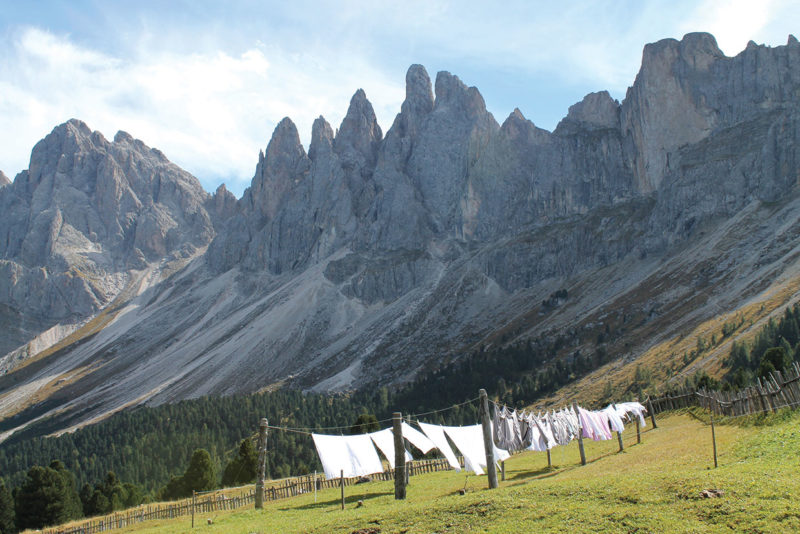
Sweeping across northeastern Italy, the Dolomites form an ancient and mesmerising landscape.
They set the ambience of this fabulous outdoor playground; an eternal lure for skiers and winter sports enthusiasts in the colder months and for hikers, mountain bikers and nature lovers in the summer.
With delicious cuisine and wines, the region offers all that the palate desires in terms of taste and flavour.
Bolzano is the biggest city in South Tyrol and the gateway to the Dolomite mountains with recently introduced direct flights from the UK, while Venice is only a couple of hours away.
Yet it is the towns of Cortina d’Ampezzo and the communities within Val Gardena – Ortisei, Santa Cristina and Selva – that enhance the character of the Dolomites, along with Corvara and the Alta Badia area.
Indeed, with extensive connected areas of piste and kilometres of hiking and mountain biking trails criss-crossing natural parks, the opportunities to explore are seemingly endless.
Amidst this are opportunities to relax in the spas and comfortable rooms and restaurants of famous hotels across the region, many of which have been – and still are – popular with international A-list celebrities.
Surrounded by the impressive mountain peaks of groupings such as Tofane, Cristallo and Faloria, Cortina d’Ampezzo has been an outdoor sporting centre for decades.
Listed as a UNESCO World Heritage Site in 2009, there are many reasons to visit the Dolomites, a wonderful part of Italy offering variety, diversity and much to be inspired by.
Our top 10 reasons to visit the Dolomites in Alta Badia
1. The oldest mountains on the planet
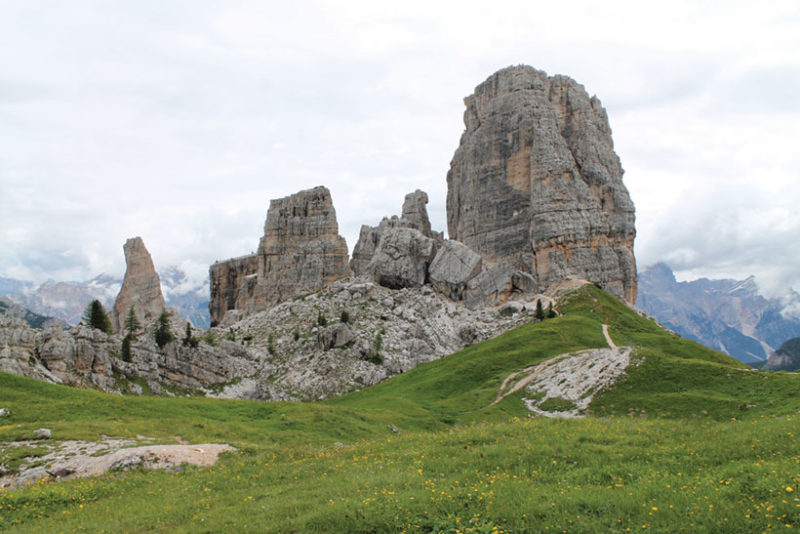
Taking their name from the carbonate rock dolomite, the Dolomites were formed during the Cretaceous Period 60 million years ago as the African and European continents collided.
Today, they are a magnificent setting with a very different feel to the Alps and are believed to be the oldest mountains on the planet.
With 18 peaks above 3,000 metres, this is a beautiful landscape of vertical walls, sheer cliffs and narrow, deep and long valleys.
The mountains also appear to respond to the hour of the day with a pinkish hue at sunrise; bold colours as the day progresses; and swathed in a returning glow of sunset red as dusk falls.
Among the most famous are the Sella group, Marmolada (known as the Queen of the Dolomites and the highest peaks here with Punta Penia at 3,343m), Tofane and Langkogel.
Nearby is Cinque Torri (the five towers), which remains an area popular with mountaineers.
2. Skiing and winter sports
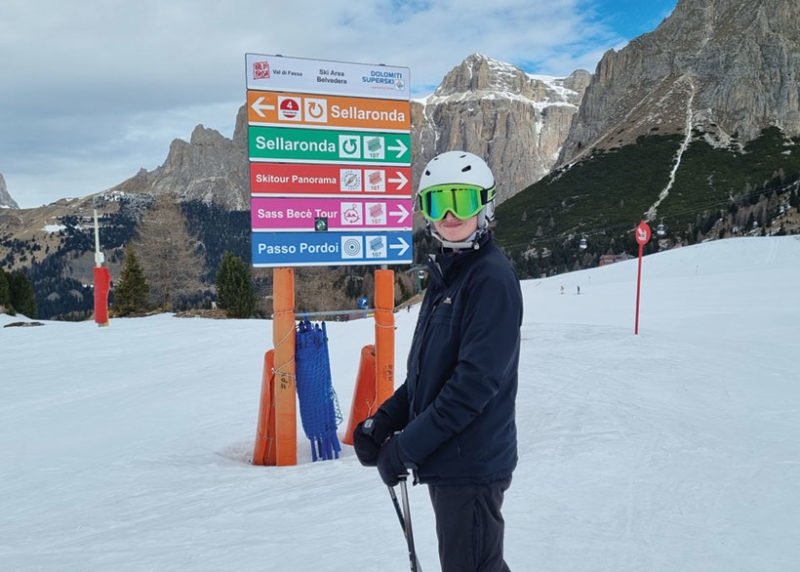
The Dolomites have fabulous ski areas, such as those centred on Val Gardena and Cortina d’Ampezzo.
There are long and exhilarating runs ranging from blues and reds to blacks and World Cup Downhill courses, as well as off-piste action, and the lift systems are efficient, comfortable and modern.
The ski area of Val Gardena-Alpe di Siusi covers some 500 km with 200 lifts, while the Dolomiti Superskipass offers access to 1,220 km of slopes and 450 ski lifts across 12 ski areas and includes the famous Sellaronda ski circuit.
Winter also offers opportunities for cross-country skiing, ski touring, hiking and snow-shoeing, as well as ice-skating and horse-drawn sleigh rides.
Some hotels also offer fat-biking, snowmobile safari tours, dog-sledding, tobogganing, heli-skiing and ice climbing.
Cortina hosted the 1956 Winter Olympic Games (the first to be televised), the 2021 World Ski Championships, and is now preparing for the 2026 Winter Olympics, which it will jointly host with Milan.
3. Hiking and mountain biking during summer
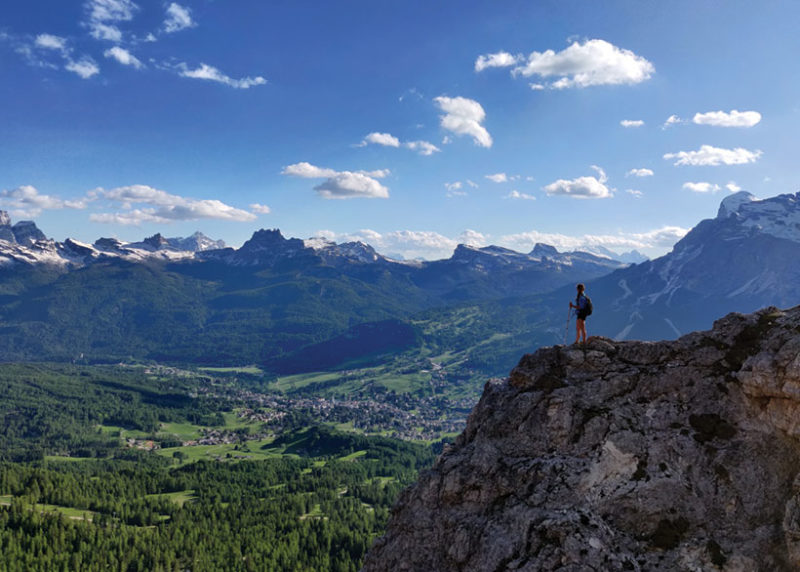
During spring and summer hiking and mountain biking are popular, with trails reaching out across the Dolomites.
The mountainsides are also dotted with rifugios for breakfast, lunch or even an overnight stay, and it is possible to plot a hiking or mountain bike route from one to another over a number of days, following a trail map or with a guide.
There is a selection of easy, medium and difficult tours that can be adapted to fitness levels and timescales.
Paths will typically take you through pine trees which plateau at about 2000m and across grassy landscapes covered in flowers, including small bunches of edelweiss, with the clang of cow bells echoing in the distance.
In addition, summer activities include golf, climbing, paragliding, wild swimming in turquoise lakes and horse-riding, or simply heading up the mountain on the gondola for a lunch on a rifugio terrace.
4. Spa, therapy, relax
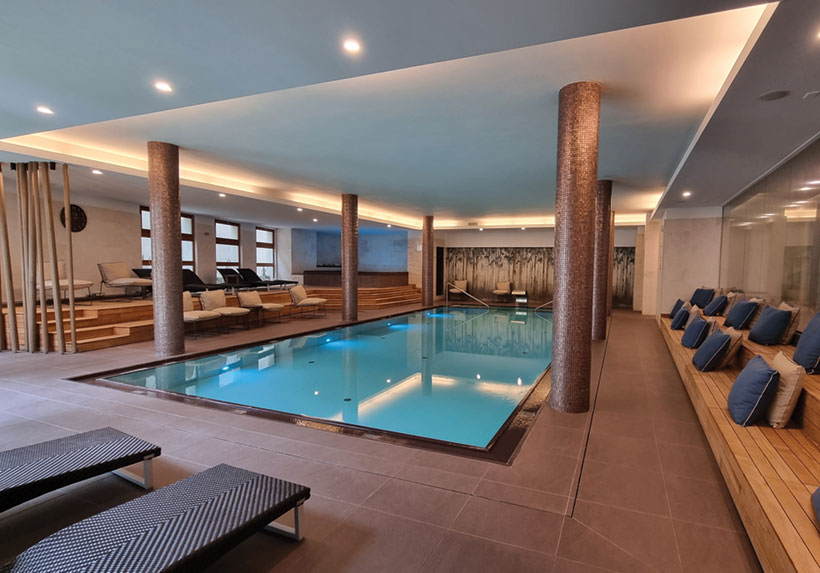
While the Dolomites region is an all-year-round outdoor destination, it’s also a great place for therapeutic relaxation, whether that is a marvellous spa or something a little different such as an Ayurveda retreat.
The Engel Ayurpura, a boutique property 20 km from Bolzano in Nova Levante, offers individually created therapies, diet and exercise programmes based on Indian Ayurvedic treatments.
More conventionally, the Sensoria Dolomites is a holistic wellness retreat with suites designed with natural and calming materials and a spa inspired by Japanese bathing rituals.
Taking the theme of relaxation a stage further is the sumptuous spa at the Grand Hotel Savoia, with a large pool and jacuzzi, steam rooms, saunas, and treatment rooms offering a range of therapies, or you may wish to enjoy the Similde Spa at the atmospheric Cyprianerhof wellness hotel in the village of Tires.
5. Language and culture
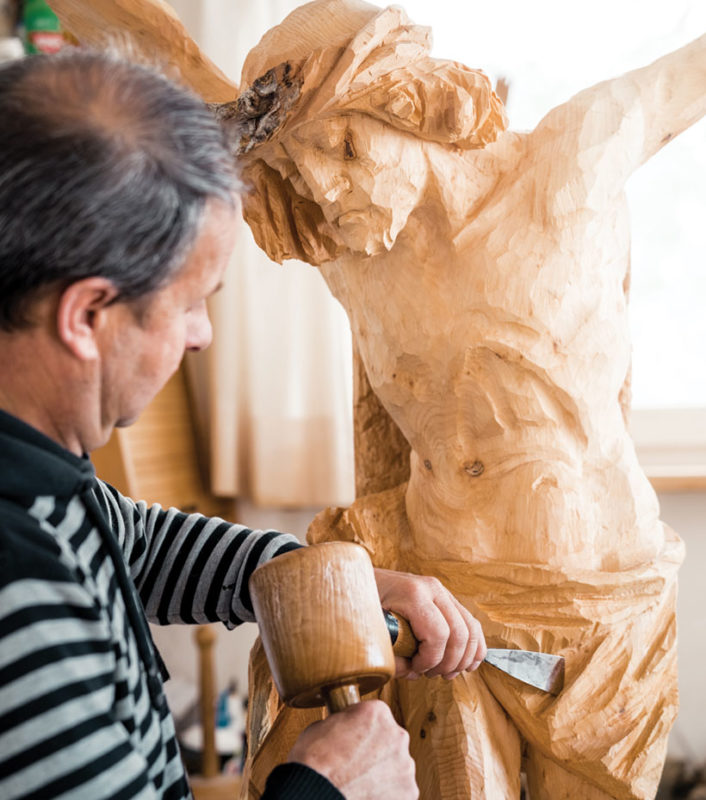
German and Italian is widely spoken in South Tyrol but the ancient Rhaeto-Romanic language of Ladin is still commonly used.
It is a derivative of Latin and symbolic of the influences that have shaped the region over the centuries.
The strong element of culture and history in the valley is seen in the cuisine and the craftsmanship, where wood carving is an ingrained centuries-old tradition in Val Gardena.
Originally it was a pastime for the whole family during long winter evenings, creating religious figures and toys. More recently, those skills have been preserved and revived and the area is now famed for its artistic creations in wood, with a number of renowned craftsmen sustaining the historic skills.
Today, woodcarving extends from sacral to contemporary art, and there’s even a chance to learn the skill and try introductory courses in carving under expert supervision.
6. Discover Dolomiti cuisine
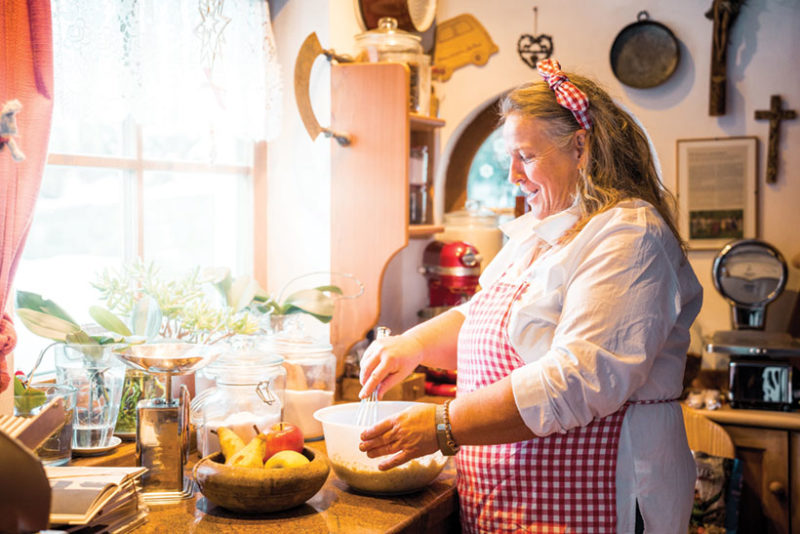
One way to discover more about the regional cuisine is through cookery lessons, such as learning how to make the traditional dish of crafuncins (spinach-filled ravioli) – by creating the pasta crescents and finely-chopped spinach – or Spinatknödel (spinach dumpling).
Alternatively, hotels and fine restaurants offer wonderful dishes, but for a more rustic approach, the rifugio and agriturismo establishments serve local specialities such as casunzei, which is a signature dish of the region of egg pasta ravioli filled with beetroot and flavoured with hazel-colour butter.
The family-run El Brite de Larieto agriturismo just above Cortina d’Ampezzo, for example, rears its own meat, makes pasta, polenta and gnocchi, and sources herbs and spices from the kitchen garden. Speck, salami and prosciutto is also prepared on site.
It specialises in traditional Dolomiti cuisine with a modern twist.
And in Alta Badia, the innovative “taste for skiing” initiative sees Michelin-starred chefs paired with mountain huts to create recipes for skiers, while towns, such as Ortisei, have numerous cafés, bars, excellent restaurants and pizzerias.
7. Explore the natural parks of the Dolomites
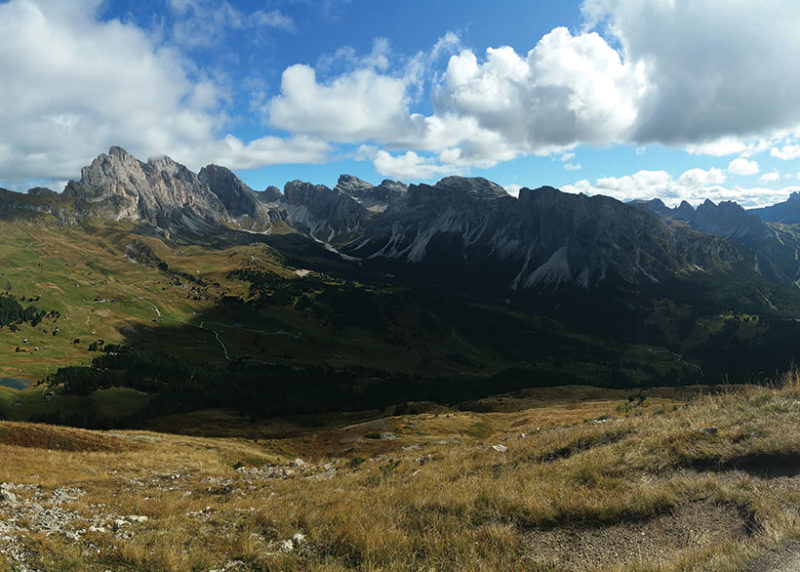
The Dolomites contain a series of natural parks, and visiting them offers an insight into the flora, fauna and natural beauty of the area.
You may see ibex, deer, marmots, an array of bird life, groundhogs and cattle on the pasture, while in the spring and summer the terrain is covered with colourful wildflowers.
Sciliar-Catinaccio Nature Park was the first to be established in 1974 and others include the Three Peaks Nature Park and the Fanes-Sennes-Prags Nature Park, which are known for peaks, pastures and crystal-clear lakes.
Meanwhile, the Puez-Geisler Nature Park in Val Gardena includes the Geisler mountain group and is renowned for its geological diversity and floral splendour with furry anemones, primrose, blue monkshood and lady’s slipper.
With nine parks in the Dolomites, there are numerous opportunities to experience the amazing natural landscape, whether you are hiking, climbing or mountain biking.
8. Cortina d’Ampezzo
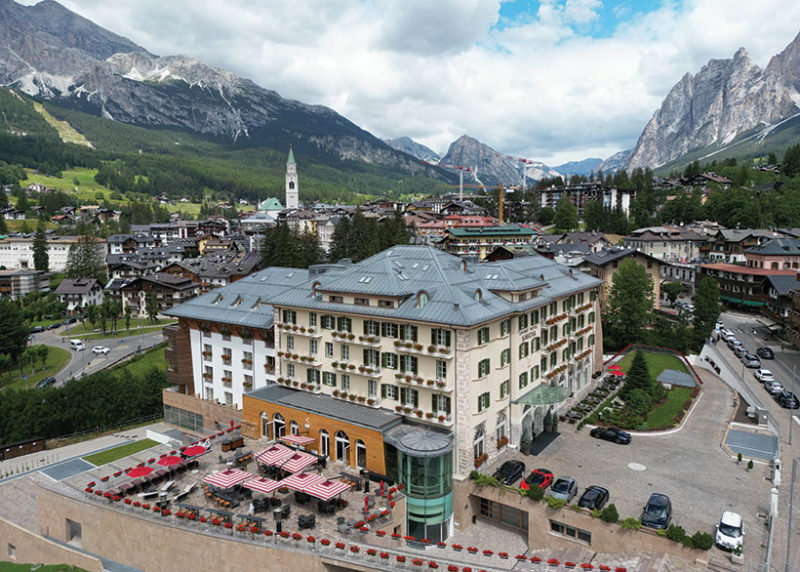
A picturesque resort, Cortina d’Ampezzo is renowned for its spectacular backdrops and A-list guests.
The pedestrianised Corso Italia hosts bars, restaurants, cafés and shops and there have been many well-known films shot in Cortina, including The Pink Panther (David Niven and Peter Sellers); Cliffhanger (Sylvester Stallone); and the James Bond film For Your Eyes Only (Roger Moore); while Frank Sinatra stayed at the five-star Cristallo Hotel when filming Von Ryan’s Express.
The Grand Hotel Savoia is equally popular with distinguished guests.
Over the years, Sophia Loren, Charlton Heston, Audrey Hepburn, Elizabeth Taylor and Sir Winston Churchill have stayed at the 132-room hotel.
Cortina has welcomed tourists for decades, firstly explorers and scientists; then the royals and aristocrats of several countries; and film stars.
Today, it offers a unique blend of local traditions, heritage and cosmopolitan lifestyle.
9. Wartime history
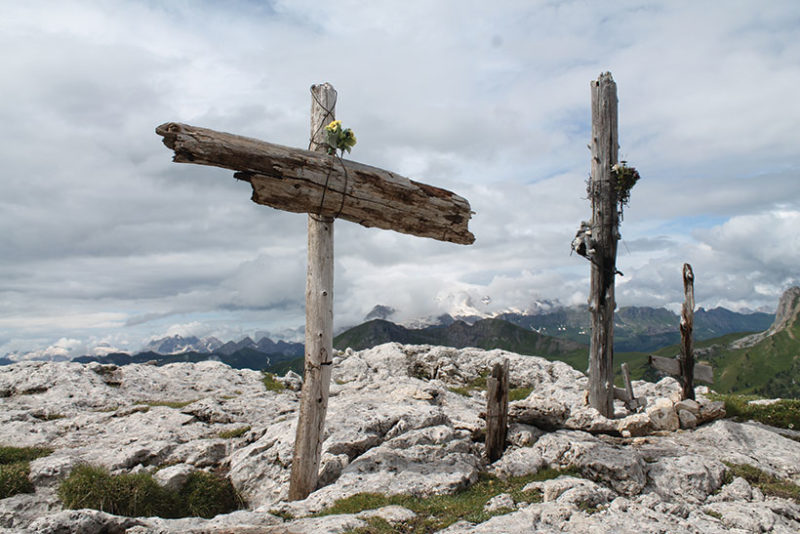
The Dolomites have a fascinating wartime history and a landscape criss-crossed with trenches, man-made caverns, gullies and the via ferrata – the ‘iron-road’ forming an intricate system of wires that enabled troops and supply chains to move swiftly and nimbly through the mountains.
The rocky terrain was just as much a part of the World War One frontline as the Western Front trenches, with troops from Italy and the Austro-Hungarian Empire involved in close combat.
You can explore abandoned fortresses in the Passo Valparola, discover lookout posts, put on a harness and helmet and slip into the tunnels of Lagazuoi, and see the metal via ferrata cables used by the soldiers.
Hundreds of thousands of troops were dug into this area near Cortina d’Ampezzo, which remained untouched by the entrenched fighting a short distance away.
Tens of thousands died from the fighting, the cold, or avalanches. The region also saw action during World War Two.
10 Stop off for a refreshing Hugo
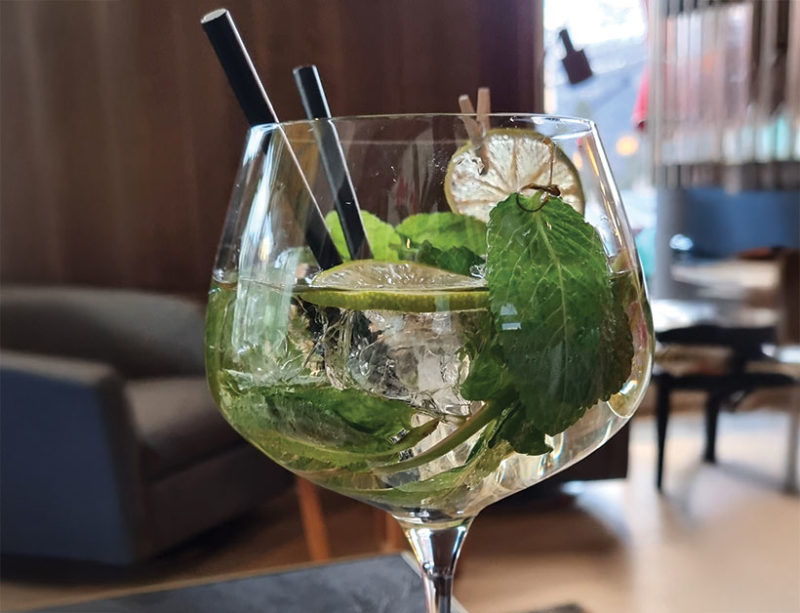
You can’t visit the Dolomites without enjoying a Hugo cocktail.
The ingredients are simple: prosecco, sparkling mineral water, the all-important elderflower syrup, a sprinkling of fresh mint leaves and ice.
As the adopted drink of the Dolomites, this zesty, refreshing aperitivo is the creation of an inspired Bolzano barman and is popular with skiers pausing for lunch, hikers stopping off at huts for a Hugo refresher, and people on their way to dinner.
As you would expect, the region also has fabulous wines and a cuisine that combines the wholesomeness of mountain terrain with Mediterranean sophistication and a number of specialities.
Speak to your wine waiter or sommelier at a hotel or restaurant and they’ll happily recommend a regional wine to accompany your meal, whether that is a light red, a dry white or a dessert wine to accompany your cannoli, panna cotta or tiramisù.
Tempted to take a trip? Check out our Dolomites travel guide
Words by Mark Nicholls
